This is great, you have your home health nursing orientation and preceptor time all next week…
Killin’ it!
Wait, both in the same week…that doesn’t sound quite right…
Especially because Hilary definitely told you that she had 2 weeks worth of orientation and preceptor time.
Hmmm, what’s really going on here…??!!
Ever played this “comparison game” with your fellow home health nurse buddies?
The sad reality is, more than 75% of all newly transitioning home health nurses will experience this.
And 35% of the nurses experiencing this will contribute to the already ridiculously high turnover rate by “exiting stage right” before they even hit their 3-month review!
And if you’re thinking “wait, what…they left their bonus money on the table”…they sure did and do…on the daily!!!!
YES, these statistics are scary, and YES you should use them as “a warning”, but not like you think…
The fact that you landed a home health nursing position is AMAZING…so CONGRATULATIONS!!!!!!!!
The exciting thing is that the home health nursing industry is growing exponentially, even in some regions where it hasn’t previously been prominent.
Buuut, this means that with SO MUCH growth within the industry, you’re gonna need to have your “own unique plan B” ready. It will prove to be a career saver when your agency doesn’t have the resources, time, or has a crazy emergency that pushes you out into the field before you’re ready!
Creating your “own unique plan B” that’s independent of whatever your agency provides is what I meant by using the earlier statistics as “A WARNING” and to your advantage.
In order to give you a great starting point for your “unique plan B”, this post is going to discuss:
- The difference between FT vs. PT vs. PRN orientation efforts,
- What home health nurses actually do,
- Who’s a part of your home health nursing team, and
- The types of assessments you’ll be completing as a home health nurse
in order to get you started off with boosting your home health nurse orientation for free!
Let’s get right into it!
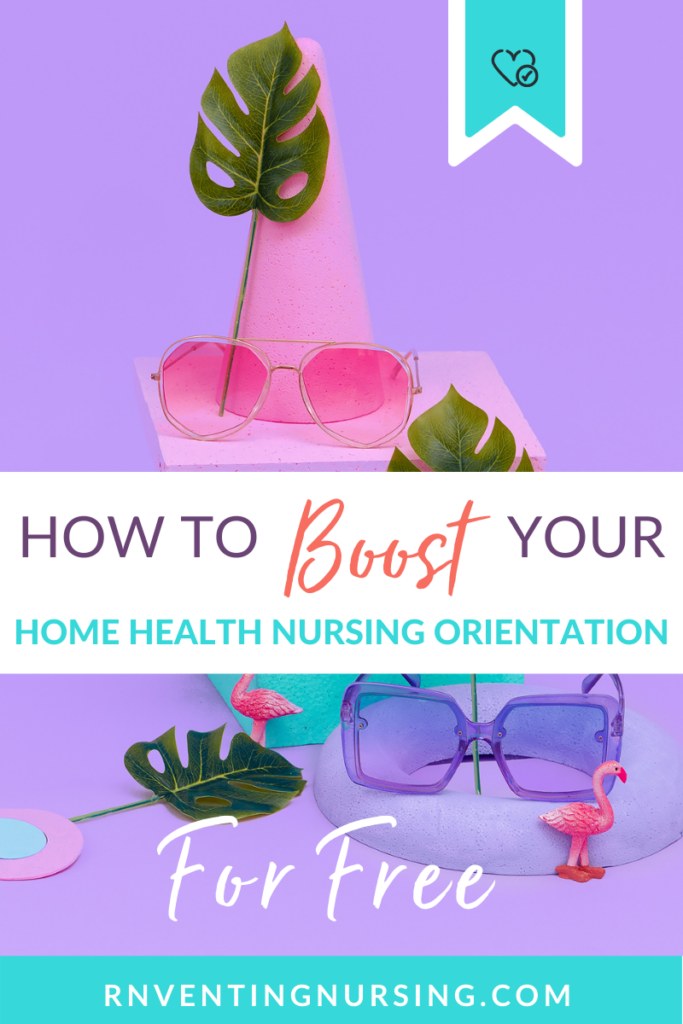
THE DIFFERENCE BETWEEN FT VS. PT VS. PRN HOME HEALTH NURSING ORIENTATION EFFORTS
Over the past 3-5 years home health agencies have been popping up all over the place by the hundreds each year. This is solely due to demand and the availability of Medicare and other funding for home health services.
Just to give you an idea of the volume involved,
- In 2007 there were 9,024 Medicare home health agencies, and by 2017 that number had increased to 11, 593 agencies. This shows that approximately 257 new home health agencies were opening and becoming Medicare certified each year from 2007-2017.
- Not to mention that Medicare’s expenditures for home health care nearly doubled from $9.7 billion in 2001 to $18.3 billion in 2012.
This is significant to us as home health and private duty nurses because as the population gets older home health care becomes more prevalent, available, and widespread. Leading to more agencies opening, and more jobs being created for home health and private duty nurses.
Unfortunately, most agencies don’t have the capacity to match the number of nurses that they need to hire in such a short period of time with the proper staff to provide efficient orientation and training.
So what we end up with is this makeshift system where agencies place a majority of their orientation and training resources into the staff members who they’re hiring for FT positions and the nurses that are to fill the PT and PRN positions kind of “get in, where they fit in”.
Which according to the population of home health and private duty nurses who I’ve had the pleasure of working with and training are left receiving the bare minimum orientation.
All because when the amount of revenue that a PT or PRN nurse is approximated to contribute to an agency’s bottom line is compared to that of an FT nurse’s revenue contributions, that FT nurse can, will, and in some cases (where a point system is used) is required to make up for the costs that were designated for their training almost 5x over in most cases.
It’s just like gambling or placing a bet. Where you’re going to invest your money in the option that is more than likely to or is required to (based on point systems, etc.) to pay you back with interest.
However, just because you’re signing on as an FT home health or private duty nurse you’re still not guaranteed any type of training above the bare minimum, which can also be frustrating because either way you’re left feeling like you can’t win.
Buuuuttt, there is a way that you can ALWAYS win…
When you go into these situations knowing and understanding the dynamics and politics, you can create YOUR OWN UNIQUE PLAN OR APPROACH.
The days before you start your home health nursing position can be stressful because you’re anticipating what it’s going to be like and what’s going to be expected of you.
So, instead of having you stress out about any of this as a new transitioning FT, PT, or PRN nurse…
Let’s just start your orientation right here, right now!
Sound good?!
Let’s do it!?
WHAT DO HOME HEALTH NURSES DO?
As a home health nurse, we are the primary care provider of the patient in their home who uses our holistic point of view to assess patients and their ability to function in their home so they can take advantage of all the disciplines that home healthcare provides in order to promote, maintain, restore the health of, minimize the effects of illness and disability…
To ensure that each of our patients can achieve and maintain the highest level of health, function, and independence.
We are so many things to our pts including:
- Care Provider,
- Educator, and
- Advocate.
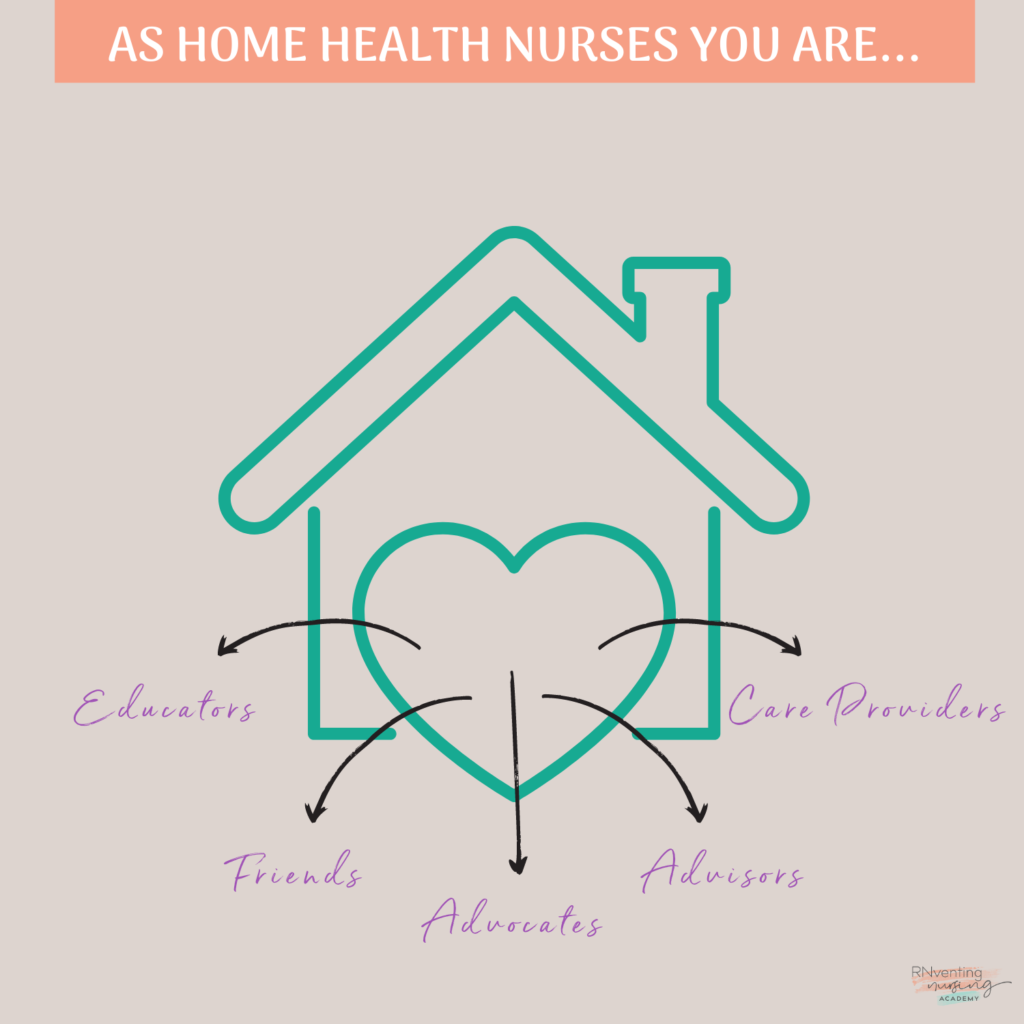
We basically…
- Bridge the gap between the PCP and the patient, or the prescribing authority and the home
- Patient safety is our top concern, and
- We develop the POC (plan of care) for each of our patients.
The main caveat for this benefit is that the patients that we see must qualify as being “homebound” per Medicare standards and definitions. I have a few blog posts that go in-depth about the classification of “homebound”, as well as a free tool The Nursing Narrative Note Formula™ that you can download to help you verify and track your patient’s home health service eligibility.
You can find the “homebound” related blog posts by clicking below:
- The #1 Mistake Home Health Nurses Make During Their OASIS Assessments
- 4 Things Killing Your OASIS Assessments And How To Fix Them
- Why Your OASIS Assessment Nursing Note Sucks And How To Fix It
You can download the free OASIS Nursing Narrative Note tool by clicking the button below.
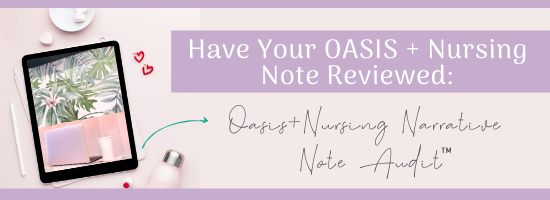
WHO’S ON YOUR TEAM?
The full suite of disciplines that our patients have at their disposal includes…
- Skilled nursing – also known as SN, which is YOU and all of the WONDERFUL things you take care of that we’ll cover in-depth in future episodes
- Physical therapy – also known as PT, who works with gross motor skills and safety
- Speech-language pathology – also known as SLP, who completes swallowing evaluations and preventing chocking
- Occupational therapy – also known as OT, who works with the patient’s fine motor skills
- Medical social worker – also known as MSW, who works with the patient and their support system to gain access to community resources for any and all of their needs. The MSW is interesting because they’re a discipline that you should ALWAYS offer if the patient lives alone.
- Home health aides – also known as HHA, (who I’ve named as the home health angels) who works very very closely with the patient to complete their ADLs, demonstrate tasks, and so much more.
- Registered dietitians – also known as RD, who works with specific patients who need assistance with establishing and maintaining a diet that strengthens their health improvement process, and odds of reaching their goals.
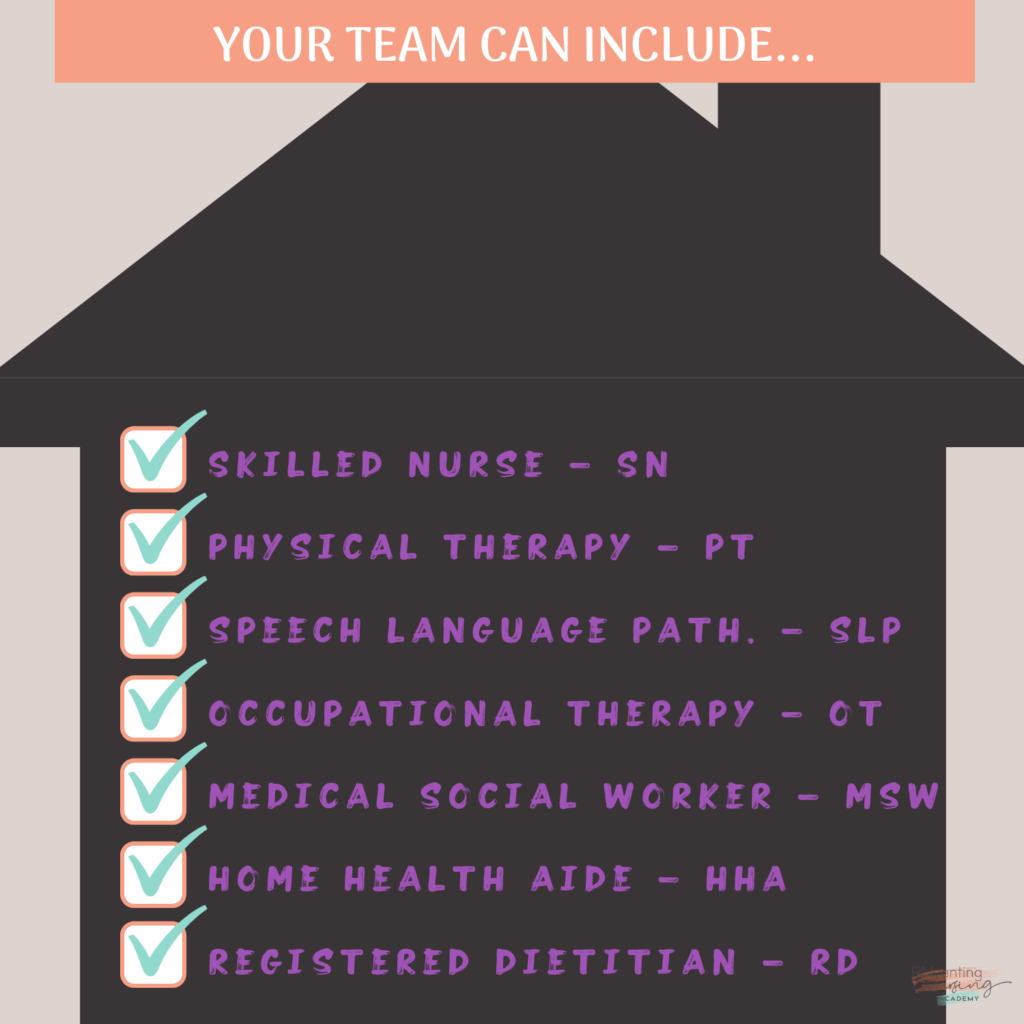
With so many benefits available to our patients, it’s tricky getting used to working in the field independently on a daily basis, while also keeping in mind that you’re still a part of a team that has the patient and their support system at the center surrounded by all other prescribed interdisciplinary team members that you MUST learn to communicate with to get each of your patients the best health care outcomes possible.
WHICH TYPES OF ASSESSMENTS DO YOU COMPLETE?
As a Home Health Nurse there are 7 main types of assessments you’ll complete which are…
- Start of care assessments – are the initial visit assessments completed by a skilled nurse (YOU) or a physical therapist. We’ll cover the instances when a physical therapist completes the SOC assessment in later posts.
- Recertification assessments – which are completed after the patient has completed 60 days of home health services
- Transfer assessments – should occur when the patient is admitted to the hospital for more than 24 hours for reasons other than diagnostic testing
- Resumption of care assessments – occurs when a patient returns home from an inpatient facility stay. They’ve basically been placed “on hold” with their home healthcare services while they were admitted to the inpatient facility
- Discharge assessments – occur when the patient is discharged from home health services. This type of assessment has two versions, and lastly the
- Death assessments – which isn’t really an assessment per se because you’re not actually assessing the patient’s corpse. Instead, you’re completing documentation on the circumstances and patient’s health standing at the time of death. This documentation is based on your already gathered information in their file along with statements from speaking to their support system or those who were present at their time of death.
- Follow-Up or Revisit assessments – which are the shorter more focused 30-minute visits.
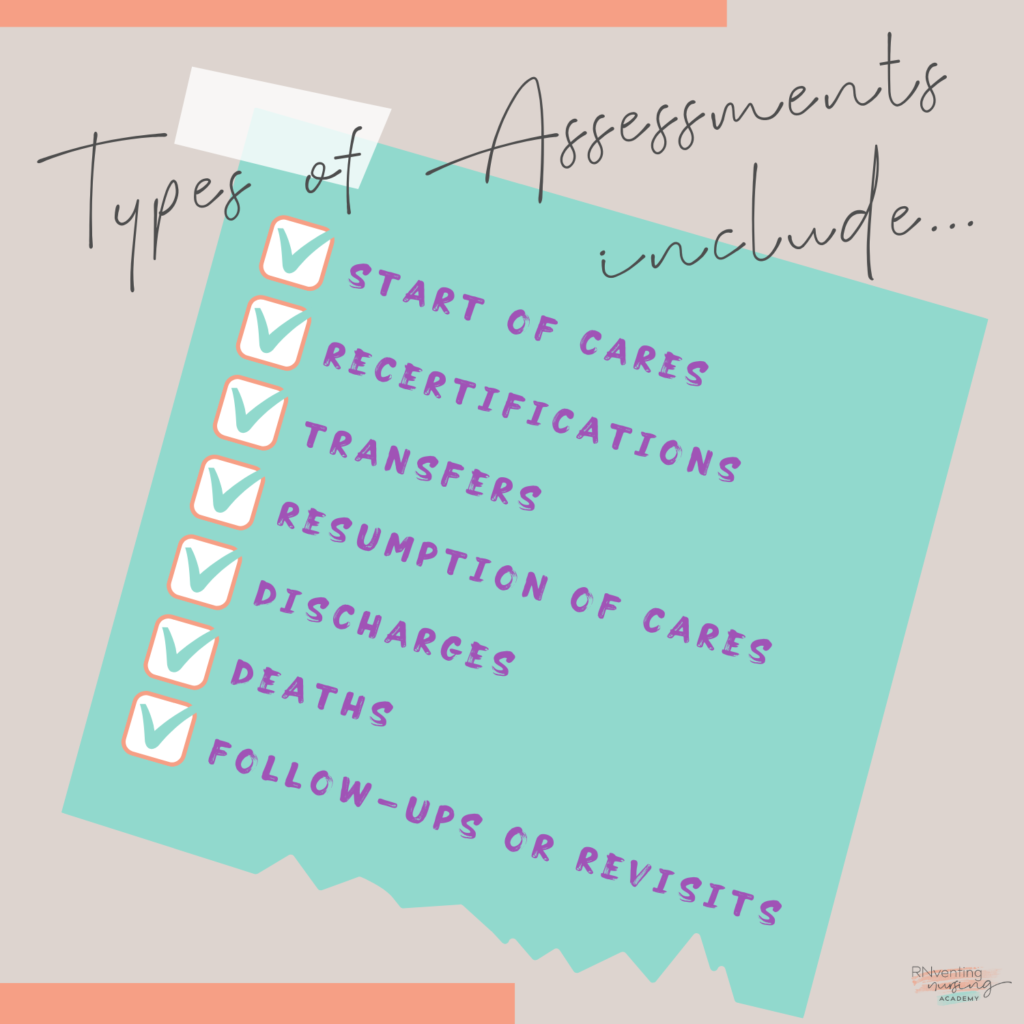
HOW DO HOME HEALTH NURSES GET THEIR PATIENTS + WHO SCHEDULES THEIR ASSESSMENTS?
This is actually the most important question…
In my opinion, this part is one of the simpler aspects of being a home health nurse. Since, when you start your interview process your availability is one of the main factors that’s included in offering you a position.
You have an offer.
So clearly, whichever availability you provided initially works with the agency’s needs.
This availability is exactly what intake should use when contacting you to accept patient cases.
After you accept a patient, you’ll then follow your agency’s protocol for gaining access to the patient’s referral paperwork and database file access.
And BAZINGA (shout out to my Big Bang Theory Peeps), you have your first SOC assessment!
Now all you have to do is call to schedule their assessment and prepare yourself for a productive outcome.
And you guessed it, I’ll be covering SOC assessment preparation and more involving start of care assessments next.
YOUR ACTION ITEMS:
- Take a moment to think through what I’ve shared about the home health nurse’s team, the types of assessments we complete and share your thoughts below.
- Check out the definition of “homebound” status according to Medicare in the 4 Things Killing Your OASIS Assessment And How To Fix Them.
- Download the free Nursing Narrative Note Formula™ tool that includes a Medicare home health services eligibility verification tool and tracker.
- Enroll in the comprehensive home health nurse orientation program Creating Your Successful EntRNce™ to Home Health Nursing to better understand your role, rules + regs, and get a question-by-question walkthrough of each and every OASIS question and the best way to answer each.
- Think about how you’d like to approach your OASIS assessment process and growth as a home health nurse as the new year begins. Then check out my popular yearly planning approach in the blog post #1 Mistake OASIS Home Health Nurses Make During OASIS Assessments.
- Join the already 2.5k+ OASIS home health nurses in downloading The JouRNal Planner Complete System™ system, which is the very first planner and assessment scheduler made for home health nurse goal setting, establishing work-life balance, and OASIS assessment scheduling.
- Get my direct help with your unique situation or question (just between us, with NO judgment) by clicking here for our LeaRN-On-The-RN™ Sessions.
Hopefully, this post has given you an understanding of the ever-evolving approach to new transitioning home health nurse orientation differences, as well as a glance into the beginnings of becoming a home health nurse.
We’ll continue new transitioning home health nurse orientation next week with the start of care assessment preparation!
If you have any specific questions or topics you’d like me to cover, please comment below.
If you’d rather not share for all to see, just email me, DM via FB, or send me a message via our exclusive FaceBook group The Productive Home Health Nurse.
Remember, we RN this together!
Until next time…stay safe 🙂

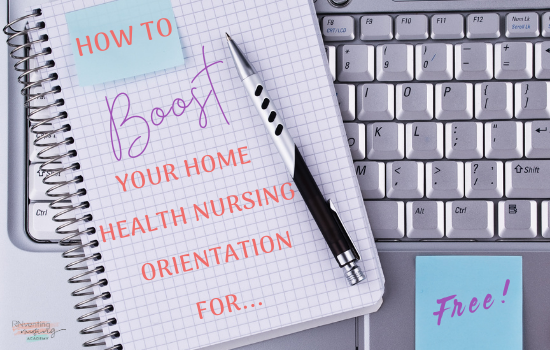

share this post on
comments
0
leave a comment